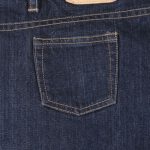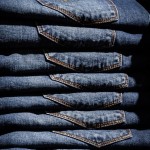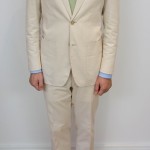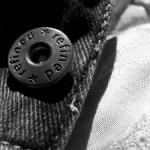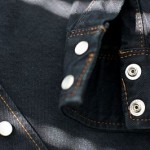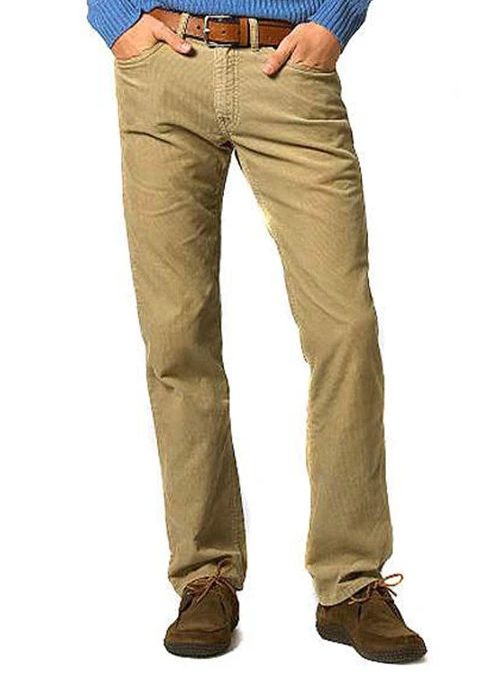
by MakeYourOwnJeans | jeans |
When researching alternative styles of jeans, you may come across corduroy jeans. Corduroy jeans aren’t traditional jeans. While they feature a similar appearance, they are constructed of corduroy. Traditional jeans, of course, aren’t constructed of corduroy. You can still wear traditional jeans in your daily outfits. If you’re trying to achieve a fresh look, though, you may want to mix up your outfits with corduroy jeans. What Are Corduroy Jeans? Corduroy jeans are full-length trousers that combine elements of both jeans and corduroy pants. As previously mentioned, they are constructed of corduroy. You can find them in different sizes, colors and styles. Regardless, all corduroy jeans are made of corduroy. The corduroy jeans sold here at MakeYourOwnJeans feature a 100% corduroy construction. There are also stretch corduroy jeans that feature corduroy mixed with an elastic fabric. The bottom line is that corduroy jeans are constructed of corduroy. Traditional Jeans vs Corduroy Jeans Traditional jeans and corduroy jeans aren’t the same. The main difference between them lies in their construction. Traditional jeans are constructed of denim, whereas corduroy jeans are constructed of corduroy. Denim and corduroy are typically derived from cotton. Denim is a warp-faced textile that’s created by passing the weft of cotton fabric under two or more warp threads. You can identify denim by looking for its diagonal ribbing pattern. Corduroy, on the other hand, features parallel ribbing. Corduroy is still derived from the cotton — just like denim — but it’s woven to achieve parallel ribbing. Cotton has diagonal ribbing, whereas corduroy has parallel ribbing. It’s known as “corduroy” because it consists of “cords.” Each raised rib...
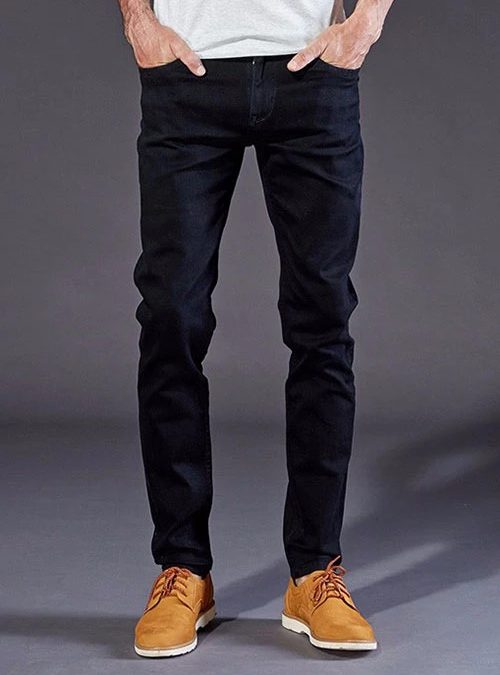
by MakeYourOwnJeans | jeans |
Chino jeans have become a popular alternative to traditional jeans in recent years. As their name suggests, they feature elements of both jeans and chinos. Chino jeans are made of a twill cotton. While they look like traditional jeans, though, chino jeans are unique. You can expect several benefits when wearing chino jeans, some of which include the following. Wrinkle Resistant Wrinkles aren’t a problem with chino jeans. Thanks to their use of twill cotton, they are naturally wrinkle resistant. Whether you wear them for a few hours or the entire day, you won’t have to worry about your chino jeans developing wrinkles. Twill cotton is a thin yet strong organic fabric that’s resistant to wrinkles. Traditional jeans, on the other hand, may develop wrinkles. You can typically de-wrinkle them using an iron, but not everyone has the available time to iron their jeans. Chino jeans, of course, don’t require ironing because they are wrinkle resistant. Available in Stretch Styles You can find chino jeans in stretch styles. Known as stretch chino jeans, they are characterized by a semi-elastic construction. Like all chino jeans, stretch chino jeans are made of twill cotton. The difference is that regular chino jeans are made exclusively of cotton, whereas stretch chino jeans are made of cotton and an elastic fabric. Stretch chino jeans receive their elastic properties from the elastic fabric used in their construction. Some of them are made of polyester. Others are made of lycra. Stretch chino jeans are still made mostly of cotton, but they contain a small amount of an elastic fabric. A typical pair of stretch chino jeans...

by MakeYourOwnJeans | jeans |
You don’t have to stop wearing jeans at the end of winter. Even when the warm weather, you can continue to include them in your daily outfits. Many people wear jeans year-round. With their denim construction, jeans are versatile. If you’re planning to wear them in warm weather, though, you’ll need to choose the right type of jeans. What type of jeans should you choose for warm weather exactly? Lightweight Lightweight jeans are typically a better choice than heavyweight jeans for warm weather. As their name suggests, lightweight jeans are characterized by a lightweight construction. They are still made of denim — just like all jeans. With that said, lightweight jeans weight less than their heavyweight counterparts. Heavyweight jeans may contain 12 to 16 ounces of denim. In comparison, lightweight jeans often contain just 7 ounces of denim. As a result, you can expect lightweight jeans to weight about 50 percent less than heavyweight jeans. This lightweight construction means they’ll allow your body to breathe better during otherwise warm weather. Consider Stretch You should consider choosing stretch jeans for warm weather. Stretch jeans are a popular choice during the spring and summer months. They are soft, lightweight and flexible. You can wear them during the cooler months of the year as well, but stretch jeans are particularly useful for the warmer months of the year. Stretch jeans are made of denim as well, but they aren’t made of the same 100% cotton denim as traditional jeans. Instead, stretch jeans are made of stretch denim. Stretch denim is a hybrid material. It consists of cotton that’s mixed with an elastic...
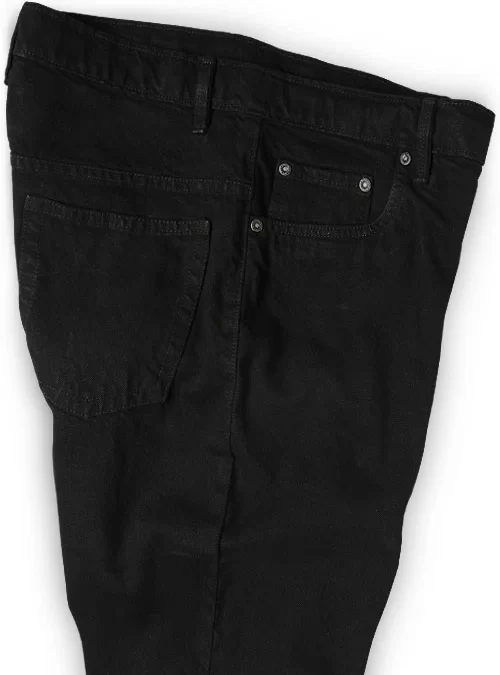
by MakeYourOwnJeans | jeans |
Jeans receive their color from dye. Whether they are indigo, light blue, black or any other color, all jeans are made with dye. They are constructed of denim that’s submerged in a solution of water and dye. The color of the dye used, of course, will determine the color of the jeans. Some jeans, however, are made with more dye than others. Known as overdyed jeans, they feater a deeper, stronger color than traditional jeans. If you’re worried about fading, you may want to choose overdyed jeans. All jeans can fade. Overdyed jeans, however, offer greater protection against fading thanks to their strong color. They are simply made with more dye than traditional jeans. If you’re thinking about buying a pair of overdyed jeans, you should consider the following tips. Color When shopping for overdyed jeans, you’ll need to consider the color. They are available in many of the same colors as traditional jeans. The difference between traditional jeans and overdyed jeans, of course, involves the amount of dye used in their construction. Overdyed jeans contain more dye than their traditional counterparts, resulting in a stronger color. The color of your overdyed jeans will determine the garments with which you can wear. Not all colors go together. If you choose black overdyed jeans, for instance, you may not be able to wear them with brown garments. If you choose brown overdyed jeans, on the other hand, you may not be able to wear them with black garments. Regardless, you should consider the color when shopping for overdyed jeans. Enzyme Washed You may want to choose enzyme-washed overdyed jeans. What...
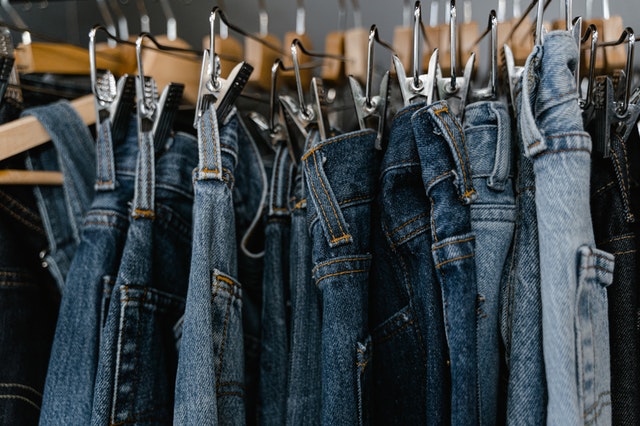
by MakeYourOwnJeans | jeans |
Jeans aren’t made entirely of denim. While you can find them in different cuts, colors and even types of denim, they all feature fasteners. Buttons and rivets, for instance, are used to make jeans. From straight-leg and wide-leg to cropped and high-rise, all jeans have buttons and rivets. As fasteners, they are used to secure the denim fabric in place. For a better understanding of buttons and rivets, including how they differ, keep reading. What Are Buttons? Buttons are fasteners consisting of a circular piece of solid material. They are used in conjunction with a loop on an adjacent piece of fabric. Also known as a buttonhole, the loop is designed to secure the button. You can unfasten buttons by pulling them out of the buttonholes. You can fasten buttons, on the other hand, by sliding them through the buttonholes. Buttons are simply circular, disc-shaped fasteners that are designed for use with buttonholes. There are snaps as well. Snaps look like buttons, but they live up to their namesake by snapping into place. You can push snaps into a corresponding backing. Assuming you use enough force, it will pop into the backing. To unfasten a snap, you can pull it out of the backing. Buttons are always used in conjunction with a buttonhole, whereas snaps are not. Snaps are button-like fasteners that snap into and out of a backing. What Are Rivets? Rivets are permanent fasteners that are used to reinforce areas of a garment. They are commonly found on jeans. Most jeans have over a half-dozen rivets, and some of them have even more rivets. Regardless, rivets have...
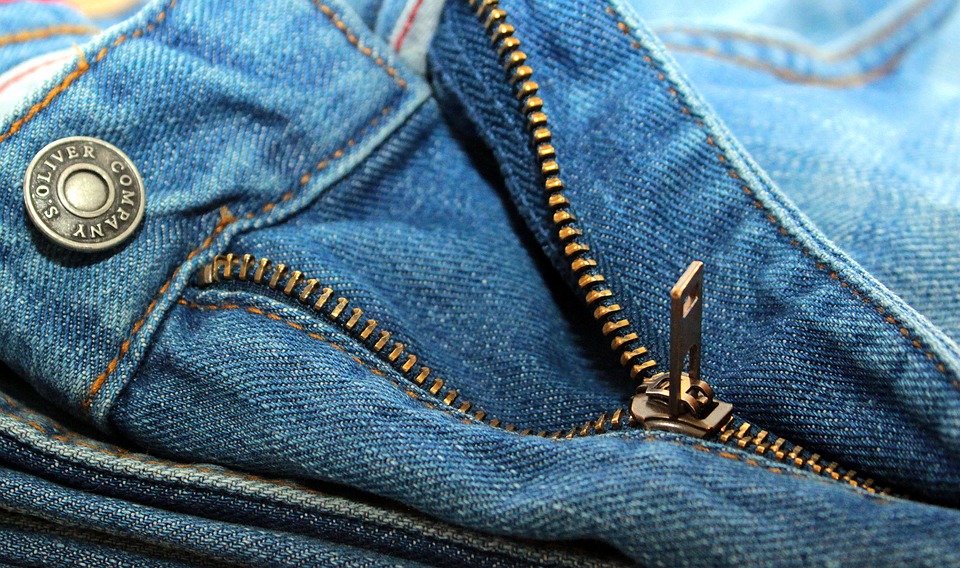
by MakeYourOwnJeans | jeans |
Is the zipper stuck on your favorite pair of jeans? While some jeans have a column of buttons for the fly, others have a zipper. The zipper consists of two rows of teeth and a fastener. You can pull the fastener up and down. Assuming it’s connected to the teeth, it should glide. Zippers, however, can get stuck. It’s disheartening when you discover a stuck zipper on your favorite pair of jeans. Maybe you pulled the jeans out of the clothes dryer, only to realize that the zipper won’t pull up. How do you fix a stuck zipper such as this? ‘Reverse’ the Zipper and Try Again Sometimes all it takes to fix a stuck zipper is reversing it. Assuming you’re unable to pull up the zipper, try pushing it down. Zippers can get stuck in different ways. Normally, though, they’ll only get stuck in a single direction. If you’re unable to push the zipper down, you should be able to pull it up. If you’re unable to pull the zipper up, on the other hand, you should be able to push it down. Reversing the zipper may reset it on the tracks. You can pull the zipper down, after which you can try to pull it back up. Stuck zippers often get caught on the tracks. By reversing it, you may be able to fix it. Just remember to avoid tugging on the zipper. You should push, as well as pull, the zipper using minimal force to minimize the risk of damage. Inspect the Tracks for Fabric If the zipper is still stuck, take a minute to inspect...








